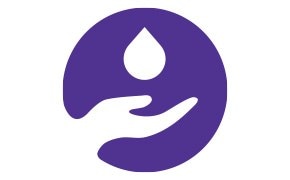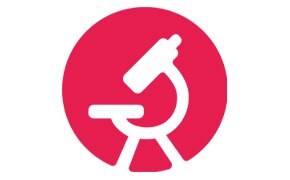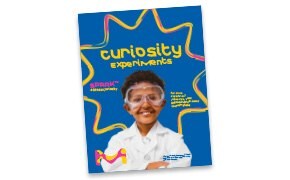Curiosity Labs™
Lesson Library
Below is a list of our currently offered lessons. More lessons coming soon!
Chemiluminescence
Overview
Lesson Questions of Inquiry:
- Why does a glow stick create light when you crack it?
Topics Covered
Energy, Energy Transfer, Chemical Reactions, Structure and Properties of Matter, Scientific Instruments and Measurements
Summary
This activity introduces students to how matter can undergo physical and chemical changes and the evidence we can use to know if a chemical change has occurred. The investigation shows students one piece of evidence of a chemical change; the emission of light, or luminescence. Chemiluminescence is one type of luminescence, and has many practical applications, including glow sticks and forensic analysis.
DNA
Overview
Lesson Questions of Inquiry:
- What is DNA?
- What role does DNA play in the inheritance of traits from one generation to the next?
Topics Covered
Plant Science, Cells, DNA, Molecular Basis of Heredity
Summary
DNA science is used every day in our world. Forensic labs test DNA evidence, farmers use genetically modified seeds and doctors target disease treatments using DNA markers. Everyone has heard of it, and everyone has it, but what is it? In this activity students will learn about the structure and function of DNA.
Flavors & Fragrances
Overview
Lesson Questions of Inquiry:
- How do products become scented?
- What is flavor?
- How do we taste and smell?
- How does the structure of flavor and fragrance chemicals influence their function?
- How do flavor and fragrance scientists design unique scents for a specific purpose?
Topics Covered
Information Processing, Structure and Properties of Matter, Defining and Delimiting Engineering Problems
Summary
In this lesson, students learn that humans can recognize more than 10,000 scents. Students practice recognizing scents by smelling different chemicals on scent sticks. They then learn how their body recognizes and interprets scents. The focus is on how the structure of the chemical causes the unique flavor or fragrance based on how it interacts with human sensory receptors. Students then use their initial research on the different scents to design a unique fragrance for a particular purpose. They present their fragrance to the class, including the name of their fragrance, how they created it, what product it would be used in, who their audience is and how much the product would cost.
Water Filtration
Overview
Lesson Questions of Inquiry:
- How much of the water on Earth is potable?
- How can you use engineering to clean dirty water?
- How do different components of the water filter work?
- What is different about what a scientist does and what an engineer does?
Topics Covered
Ecosystem Dynamics, Functioning and Resilience, Human Impacts on Earth Systems, Defining and Delimiting Engineering Design Problems, Developing Possible Solutions, Optimizing the Design Solution
Summary
In this activity, students learn that of all of the water on Earth, only a very small percentage is potable, or safe for drinking. Students use this information as motivation to design a water filter using the engineering design process. After creating a prototype of their design, students test their filter by pouring dirty water through it. The process of filtration is tied to the physical properties of matter, and students learn how water filtration is used in the industry by scientists and individuals. Finally, students test their clean water by recording visual observations and testing the chlorine content of the water.
Graphene
Overview
Lesson Questions of Inquiry:
- How is energy converted from chemical potential energy to light energy in a circuit?
- How do the properties of graphite allow it to be used to form a circuit?
- What are some of the potential and current uses of graphene?
Topics Covered
Physical Science, Materials Science Electric Circuits, Properties of Matter
Summary
Innovations in science and technology are moving at a rapid pace. Discovering new materials or finding new ways to use existing materials is the work of engineers and materials scientists. In this lab, students explore the properties of graphene and learn about current and potential future uses for this material.
Soil Microbiome
Overview
Lesson Questions of Inquiry:
- What is the soil microbiome?
- What affects the health of the soil microbiome?
- How can we grow healthy plants?
Topics Covered
Earth Science, Life Science
Summary
This activity introduces students to the role of soil microorganisms in ecosystems; specifically, the relationship between the soil microbiome and plant health. Students learn about this relationship by creating plant models for a theoretical farm. The model shows students how different choices a farmer makes in preparing the soil for planting, choosing what to plant, supporting plant growth, etc. can affect the soil microbiome. They will come to understand that not all bacteria are bad bacteria, and that a diverse microbiome supports the growth of healthy plants.
Information for Teachers
The Curiosity Lab™ lessons are designed to supplement your classroom curriculum. We find that students are able to receive the most value from our lessons when they have at least baseline knowledge of the topic. Our lessons were written for an audience of students ages 8-13, but they can be adjusted with your input to best fit your students’ needs. We will work with teachers prior to entering the classroom to ensure our volunteers are able to maximize their time with students.
If you have any questions, please email us at curiositylabs@milliporesigma.com
Related Resources
Interested in enrolling as a partner school? Click here to learn more!
Learn More about Curiosity LabsTM and get to know a few of our scientists!
Check out our Curiosity Labs™ at Home site for more lessons that can be completed with materials typically found around the house.
To continue reading please sign in or create an account.
Don't Have An Account?

